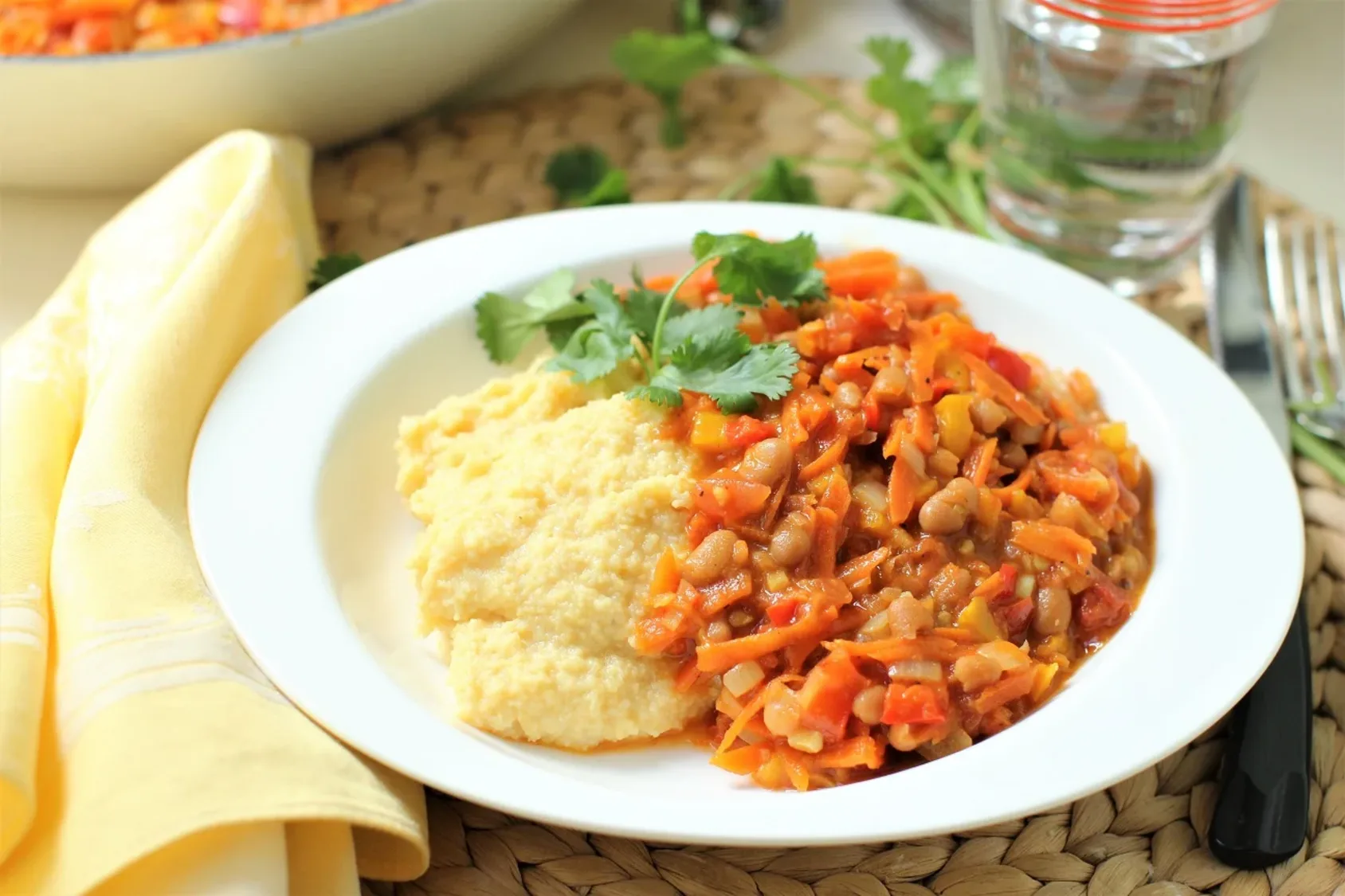
Pap and Chakalaka
Traditional porridge made from ground maize served with spicy vegetable relish.
Ingredients
- •Maize meal
- •Water
- •Salt
- •Onions
- •Tomatoes
- •Carrots
- •Bell peppers
- •Beans
- •Curry powder
- •Chili
Instructions
Cook Pap
Gradually add maize meal to boiling water, stirring until thick
Prepare Vegetables
Chop and sauté vegetables for chakalaka
Make Chakalaka
Add spices and simmer vegetables until cooked through
Pap and Chakalaka is a quintessential South African comfort food combination that perfectly represents the country's diverse culinary heritage. Pap, a thick porridge made from ground white maize (similar to polenta), forms the starchy base of this dish, while chakalaka, a spicy vegetable relish, adds vibrant flavors and colors that make this pairing irresistible.
The origins of this combination reflect South Africa's history. Pap has been a staple food among indigenous communities for centuries, while chakalaka is believed to have originated in the townships of Johannesburg, where migrant workers created this spicy relish to add flavor to their basic meals. The dish gained popularity during the apartheid era when workers needed affordable, filling, and nutritious food options.
Making perfect pap requires skill and practice. The key is gradually adding the maize meal to boiling water while stirring constantly to avoid lumps. The end result should be firm enough to eat with your hands, a consistency South Africans call "phutu pap." Chakalaka, on the other hand, is more forgiving - it's a flexible recipe that typically includes onions, tomatoes, carrots, and beans, spiced with curry powder, garlic, and chili. Some cooks add cabbage, bell peppers, or even grated ginger for extra flavor.
While traditional recipes remain popular, modern variations of chakalaka might include different vegetables or adjust the spice levels. Some people make a milder version for children, while others amp up the heat with extra chilies. The basic pap recipe stays largely unchanged, though some prefer to add butter or salt for extra flavor.
In South African homes and restaurants, pap and chakalaka is commonly served as a side dish at braais (barbecues) or as a main meal on its own. It's often accompanied by grilled meat or boerewors (South African sausage). The proper way to eat it is to take a portion of pap, make an indentation with your thumb, and use it to scoop up the chakalaka.
From a nutritional standpoint, this combination offers a balanced meal. Pap is high in carbohydrates and provides sustained energy, while chakalaka adds essential vitamins and minerals from the vegetables. A typical serving contains around 300-400 calories, depending on portion size and specific ingredients. The dish is naturally vegetarian and can be made vegan by avoiding butter in the pap. It's also gluten-free, making it suitable for people with celiac disease. However, those watching their carbohydrate intake should be mindful of portion sizes, as pap is high in starchy carbs.
